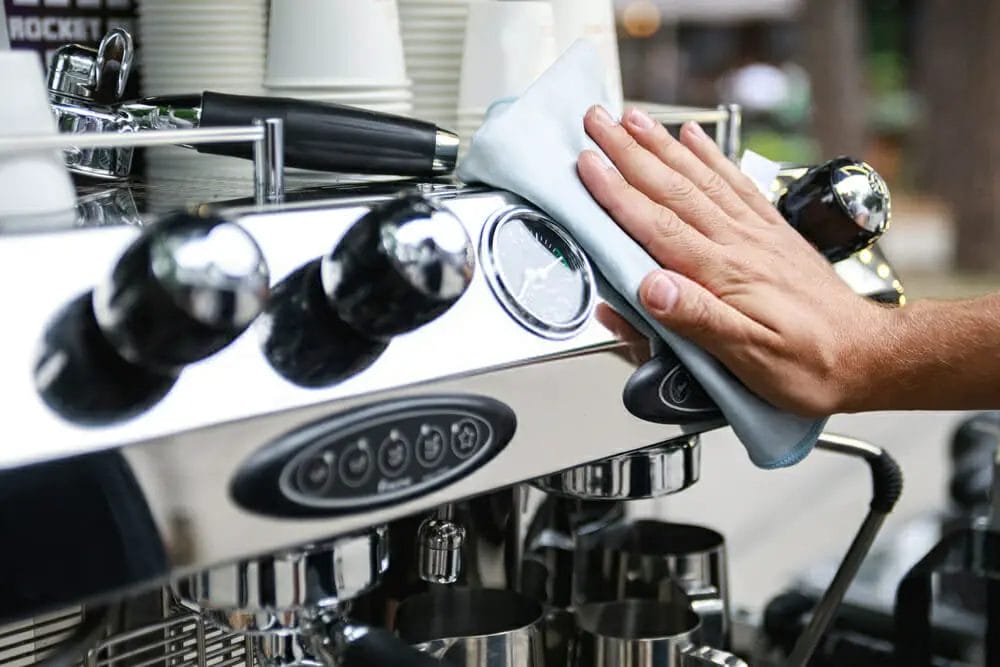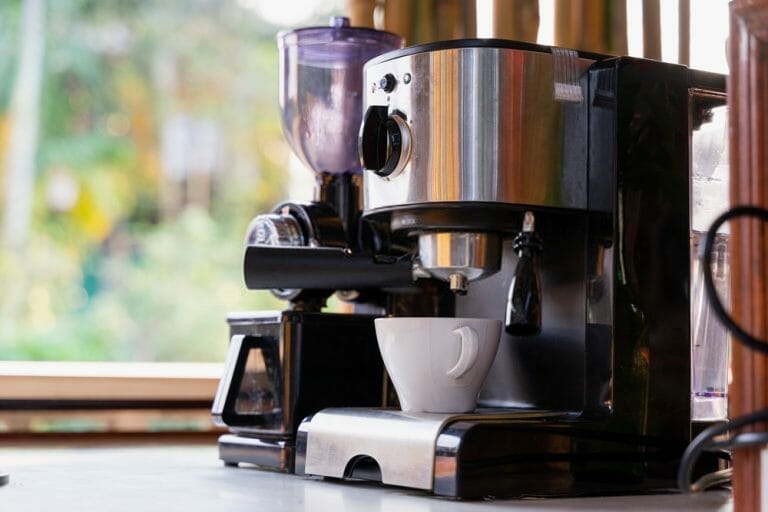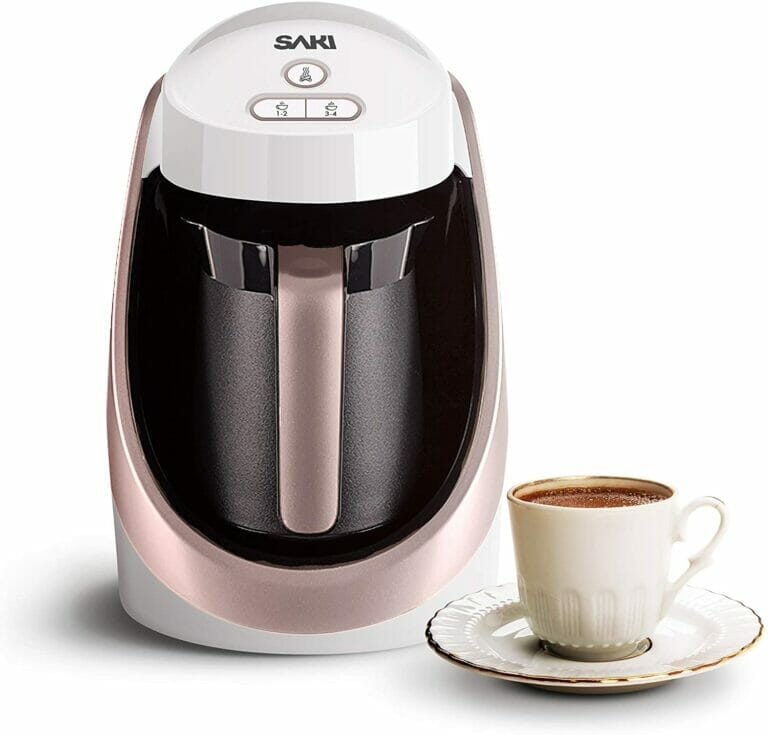How To Clean Mold Out Of A Coffee Maker- Can You Use Rubbing Alcohol?

One of the most common problems is that mold will grow in the coffee maker and cause the taste of coffee to be bad or even affect personal health.
But do you know how to clean mould out of a coffee maker?
Coffee has now become an indispensable drink for many people around the world. And when you have a coffee maker, it becomes even simpler.
You just need to press the button and you get an aromatic cup of coffee. But it is not always easy to make good coffee. It is equally important to know What is the best way to clean the inside of a coffee maker?
Let’s take a look.
Coffee Makers: The Basics
Coffee machine manufacturers have created different types of coffee makers over the years. The most common types include automatic drip machines, single-serve brewers, and percolators.
Today, the most commonly used machines in homes are either an automatic drip coffee machine or a single-serve brewer.
With an automatic drip machine, you put in the standard filter, add water to the reservoir and ground coffee beans to its holder. Then turn on the machine and let it brew your coffee for you after it heats up.
With a single-serve brewer, you add the coffee grounds directly to the reservoir and turn on the machine to brew your drink.
As for percolators, they tend to be larger and more expensive than other coffee makers and require constant supervision and attention throughout the brewing process. They also create a lot of noise during cleaning.
Removing Mold From Your Coffee Maker – What is the best way to clean the inside of a coffee maker?
Most coffee makers are made of plastic, which is porous and quickly absorbs water. It means that many people have mould growing in their coffee makers. It also means that cleaning your coffee maker can be a challenge.

Having a mouldy coffee maker doesn't necessarily mean that your coffee is unsafe to drink. Mold only occurs in areas of high moisture, but it can make your coffee taste bad.
Here Are Some Steps of How To Clean Mold Out Of A Coffee Maker?
Step 1- What is the best way to clean the inside of a coffee maker?
Remove & wash the basket from inside the coffee maker if necessary. You can do this by removing the basket from the inside.
If you have a basket with a handle, make sure to use a cloth or paper towel to hold it and not touch the plastic handle.
For washing, it depends on how much mould there is and what kind of basket you have, if any. If you use a basket, it’s best to remove it first so you can throw it away and replace it with another one later if possible.
For the other baskets, use an all-purpose cleaner or soap to wash them out with water thoroughly. Then dry them by hand or put them in the dishwasher.
Step 2- How do you clean a moldy coffee maker without vinegar?
Wipe down the outer parts of the coffee maker. Most of the mold will be found on the outer parts of your coffee maker, such as the carafe, water reservoir and brew basket.
Use warm soapy water to wipe down these areas with a soft cloth. Don't forget to clean around and beneath any removable parts.
If you see mould in or around these areas, use something to scrub them off and scrape them away using a plastic knife (not metal). Rinse everything off thoroughly and allow it to air dry completely before using it again.
Step 3 – Can I use apple cider vinegar to clean my coffee maker?
Fill the coffee pot with half white vinegar and half water and allow it to sit overnight. Before filling the coffee pot with vinegar, make sure you thoroughly rinse the water reservoir. Then add your grounds and fill it up to the halfway mark with water.
After that, add half of the white vinegar and half of the water again. Next, press the "Dunk & Brew" button to start brewing your coffee.
It will help dissolve any mould that is on the inside of your water reservoir and brew basket. However, this doesn’t clean the outside of your coffee maker. Also, don’t forget to change your filter.
Step 4
Follow the directions for your coffee maker to clean it with vinegar. You can use this method if your coffee maker has a descaling feature or other parts that you can take apart that are made of metal.
Again, follow the directions that come with your coffee maker to use it properly. For example, some require you to run water through the system several times to clean it properly.
How Often Should You Clean Your Coffee Machine?
You should clean your coffee maker as often as you can. It’s ideal for cleaning it after every time that you use it and before each time that you use it again.

You can also clean it every month if your coffee maker is kept in the cabinet, so mould doesn’t have much chance to grow.
It is not a good idea to use detergents and abrasives like Comet and Ajax to clean your coffee maker because they can scratch and damage the surface, leading to rust. Also, avoid using bleach.
After you clean your coffee maker with any chemical, make sure that you rinse it thoroughly before making another cup of coffee.
It will help you keep your coffee fresh and prevent any bad tastes from building up.
Tips For Using Your Coffee Machine – What is the best way to clean the inside of a coffee maker?,
The following are helpful steps that you can take to use your coffee maker properly:
- Always keep the water reservoir full. If you’re busy, try to fill the tank with some hot water before brewing. It will help clean any sediment that may have built up on the inside of the machine so that your coffee will taste smoother.
- Use a new filter each time you brew coffee or use decaffeinated if necessary since many people do not like the taste of chemicals in their coffee.
- Always remember to dump out the coffee from the filter after each use. Leaving it in the filter can cause your coffee to taste bitter.
- Try not to add too much coffee grounds because this can make your coffee taste bitter, and you may end up with a lot of sediment when you clean the machine.
- If you have a mildew smell when you brew or drink your coffee, it’s likely that your coffee maker isn’t properly cleaned and is full of mould, which means it’s time for a new one.
- Be sure to clean your coffee maker right before using it, so you don’t have a hard time doing so the next day.
- To prevent mould from growing, try to clean your coffee maker as often as possible and remember to change the filter every time you brew. Also, be sure that the water reservoir is full when brewing so that there’s always enough water there for cleaning it out.
- If you have mould inside your coffee maker, use vinegar to clean it out. Before brewing, take note of the manufacturer’s directions on how much grounds to use since this is an essential step in brewing the best cup of coffee possible.
How do you clean a moldy coffee maker without vinegar?
You should only use vinegar as a last resort to clean your coffee maker, since it is more likely to damage the surface of the machine, leaving you with a mess and stains.
You may use citric acid instead. Citric acid is a natural product that has antimicrobial properties, so it can be used to clean your coffee maker.
Does vinegar kill coffee mold?
Your house is like a safe house for mold, right? If you find mold growing in your coffee maker, it’s likely that the mold has built up over time and that your coffee maker isn’t properly cleaned. Clean it with water and vinegar, and follow the directions given by the manufacturer to avoid damaging your coffee maker.
Does baking soda kill mold in coffee maker?
It is true that baking soda can help remove odours, but it won’t eliminate the mould in your coffee maker. It is best that you go out and buy a new coffee maker rather than trying to clean your machine with baking soda, because it will only leave you with a mess on your hands.
Can you run soapy water through a coffee maker?
If you use soapy water to clean your coffee maker, you risk getting dirt and soap in the machine. There’s also the possibility of cutting and rusting any metal parts that are not insulated. Furthermore, it could affect the taste of your next cup of coffee.
Can I run bleach through a coffee maker?
It is not a good idea to use bleach to clean a coffee maker. Bleach can damage the surface of your coffee maker, leaving you with an unpleasant taste in your next cup of joe.
You should also not use detergents or abrasive cleaners like Comet and Ajax because they can scratch the surface of your coffee maker and leave it looking dull, which is never good!
Will lemon juice clean coffee maker?
Lemon juice is a popular cleaning product because it is great for removing stains and odours. However, lemon juice is ineffective when it comes to coffee machine mold.
Does CLR clean coffee maker?
Clorox® Laundry Stain Remover™ can be used to clean your coffee maker. However, CLR doesn’t remove the stains from your coffee maker. To do so, you will have to replace your coffeemaker.
What can I use instead of white vinegar for cleaning?
You can use hydrogen peroxide to clean a coffee maker. It is safe for use in plastic and stainless steel, so you don’t have to worry about damaging the surface of your machine.
What should I do if my coffee smells musty?
If you notice that your coffee smells like mildew, it may be time to clean your coffee maker. However, in most cases, a mildew smell cannot be removed using vinegar. However, you can remove mildew with baking soda. If you have a dehumidifier, baking soda will also help to eliminate the smell of must.
Conclusion:
Coffee makers and coffee machines can be handy tools in our daily lives.
However, we must not forget to take care of them and make sure that we clean them regularly.
It is because mould can cause water to turn nasty, mouldy coffee may taste bad, and it may also give off a distinct odour that will leave you wondering whether your coffee is still safe to drink or not.
Therefore follow these steps to How To Clean Mold Out Of A Coffee Maker? And know whether Can you use rubbing alcohol to clean a coffee maker?






